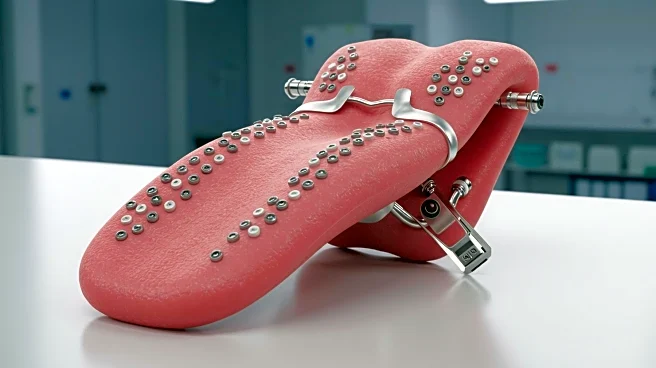What's Happening?
Researchers have successfully created the world's first artificial tongue that can sense and identify flavors in liquid environments, mimicking human taste buds. This breakthrough, detailed in the journal PNAS, could revolutionize food safety and disease detection through chemical analysis. The artificial tongue utilizes graphene oxide membranes, which act as molecular filters for ionic versions of tastes, allowing the device to identify and remember flavors. The system demonstrated high accuracy in identifying basic tastes and complex drink mixtures, marking the first successful integration of sensing and information processing in a single wet system.
Why It's Important?
The development of an artificial tongue has significant implications for various industries, including healthcare and food safety. It could lead to advancements in medical diagnostics by enabling early disease detection through taste analysis. Additionally, it may improve quality control in beverage production and environmental monitoring of water supplies. The technology represents a step towards neuromorphic computing, where AI systems mimic the brain's learning process, potentially transforming how machines interact with their environment.
What's Next?
While the artificial tongue shows promise, researchers acknowledge challenges such as its bulkiness, detection sensitivity, and power consumption. Future improvements could involve scaling up production, enhancing power efficiency, and integrating multiple sensors. These advancements may lead to transformative changes in healthcare technology, robotics, and environmental monitoring within the next decade.
Beyond the Headlines
The artificial tongue's ability to process information in liquid environments opens new avenues for bio-inspired ionic devices. This innovation could pave the way for autonomous machines capable of 'tasting' their surroundings, offering potential applications in robotics and environmental monitoring. The technology also highlights the growing intersection of AI and sensory systems, which may lead to more sophisticated and adaptive machines.















